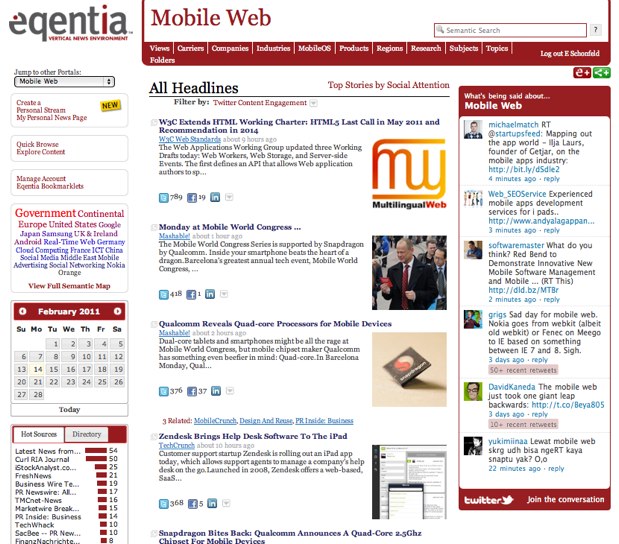
When it comes to realtime news, the prevailing wisdom these days is to let your friends tell you what to read through Twitter or Facebook. Instead of editors, people are using these social stream sto filter their news, and a whole bunch of apps (like Flipboard) are tapping into that to present your social news feed in more appealing ways. But a Toronto startup called Eqentia is approaching the problem from a different angle. It indexes 100,000 articles a day across blogs and news sites, puts them through a semantic engine to categorize them into every topic imaginable, and only then does it look at how much social attention each article is getting. Social comes last, not first.
What you get is a personal news page organized by topics and sub-topics that you want to follow (business, technology, iPad news, mobile web, cloud computing). Headlines can be sorted by time, social attention, or preferred sources. Eqentia is designed to create a competitive intelligence dashboard were you can create essentially an alerts page for specialized news about any micro-topic, but these also roll up into broader topics. Each topic page shows recent tweets about that topic in a sidebar widget. The news search is also pretty powerful because of all the implicit categorization and content mining that Eqentia does.
Eqentia has been around a couple of years, but it recently cleaned up its design and launched a few new features, including a personal news stream that syncs with your Twitter favorites and Google Reader shared items. Any Tweet with a link that you favorite on Twitter will appear in your personal stream, along with starred and shared items in Google Reader. Eqentia also offers a browser bookmarklet that lets you start tracking news about topics simply by highlighting them in your browser page. If you make your personal stream public, others can follow it, opening up the service to social curation of the news.
Some of the topic streams can be delivered to other news readers such as Flipboard if you don’t like its user interface. The site could still use some streamlining in terms of making it easy for people to jump in and start using it, but there are some powerful technologies under the hood.
